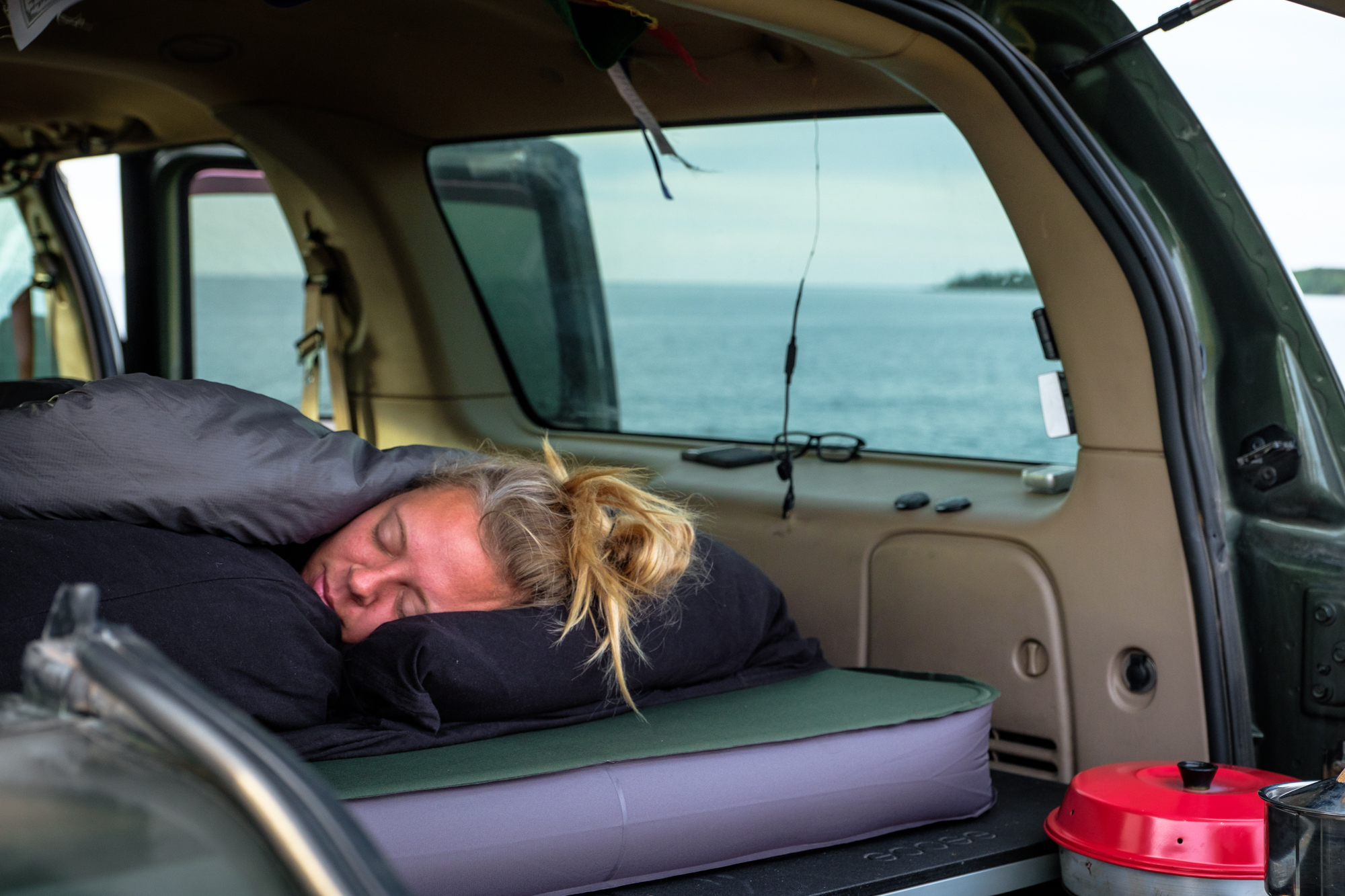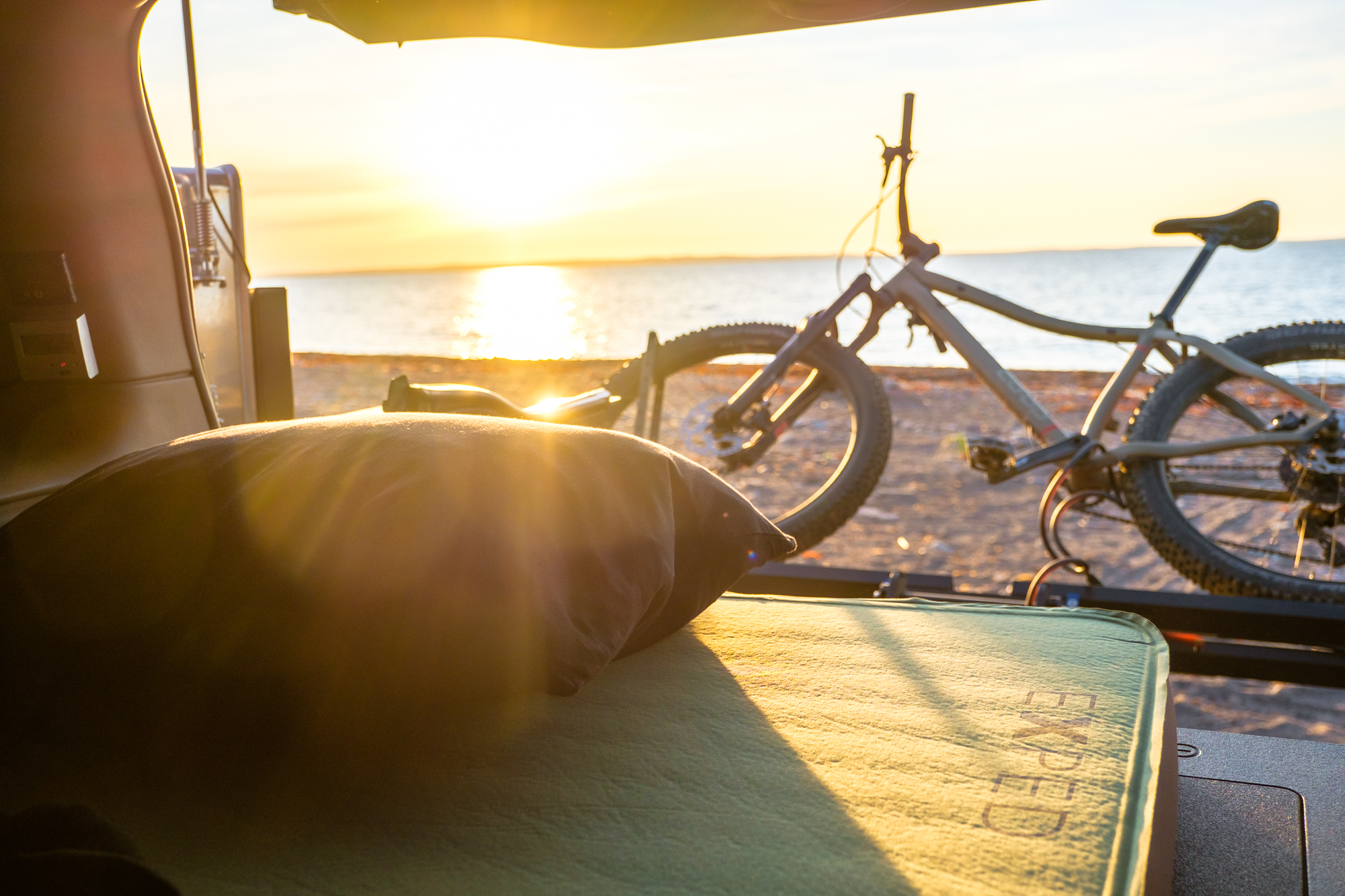There are a lot of ultra-comfortable sleeping pads on the market these days, but ask someone in the overland world what they think is the plushest pad in all the land, and there’s a good chance they’ll say the Exped Megamat. It’s no surprise. Exped was one of the pioneers of car camping pads, and their 4-inch thick Megamat has had almost nine years to set the benchmark for camping comfort. However, after recent tests of the Nemo Roamer and Sea to Summit Comfort Deluxe SI, I got to wondering if the Exped would still stack up. To find out, I threw one in my Excursion and hit the road, evaluating it in locales ranging from the sunny southern shores of Florida to the wind-battered woods of Newfoundland.

About the Pad
The Exped Megamat is designed to be as comfortable as possible while still packing down to a toteable size. Our test model, a Duo 10 M, weighs a little over 9 pounds and rolls up to 21.7 inches x 11.8 inches, or roughly the size of a standard gym duffel. Despite this modest pack size, it unfurls to a spacious 40.9 inches wide, 72 inches long, and nearly 4 inches thick when inflated—perfect for a two-person tent or the back of most four-wheel drives. The open-cell polyurethane foam uses horizontal air channels to help cut weight, but also drastically improves insulation with an R-value of 9.5, one of the highest on the market. As you’d expect, the pad is self-inflating for ease of use, but it also includes a mini-pump for small adjustments in pressure and a dump valve for rapid deflation. A range of sizes is available, with pricing from $239 to $389.
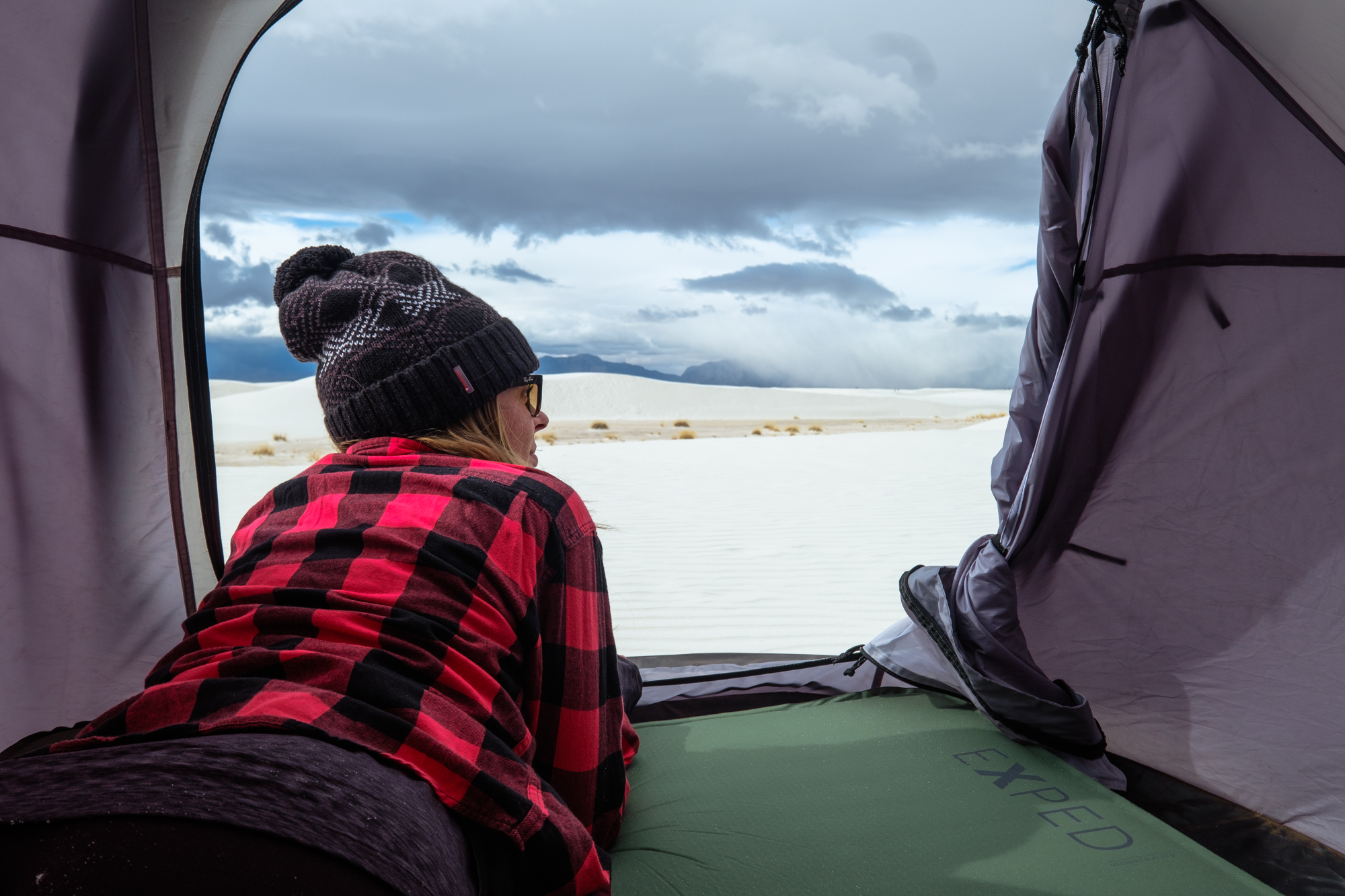
Our Impressions
Let’s start with the obvious, the Megamat is seriously comfortable. It has vertical sidewalls that provide an edge-to-edge sleeping surface, a tricot top that is soft yet durable, and 3.9 inches of open-cell foam with adjustable air pressure—it’s basically the Sleep Number bed of camping. But here’s the thing, you would know all of that by reading nearly any review of this pad online, so there’s no need for me to waste your time waxing poetic about its comfort. Instead, I’m going to dive into some of the specific features of this pad and what makes it different from the competition, starting with one of the Megamat’s biggest benefits for overlanders, insulation.
As mentioned, the Exped carries an R-value of 9.5, which is one of the highest we’ve ever tested. It blows past Sea to Summit’s Comfort Deluxe rating of 5.2 and Nemo’s Roamer pad which doesn’t carry an official rating at all. That’s a big deal when you’re sleeping in a vehicle with a metal floor and free-flowing air between you and the ground. During testing, I found that the Megamat’s open-cell foam was able to ward off the cold even when temperatures dropped well into the teens, while also staying cool on warm days.
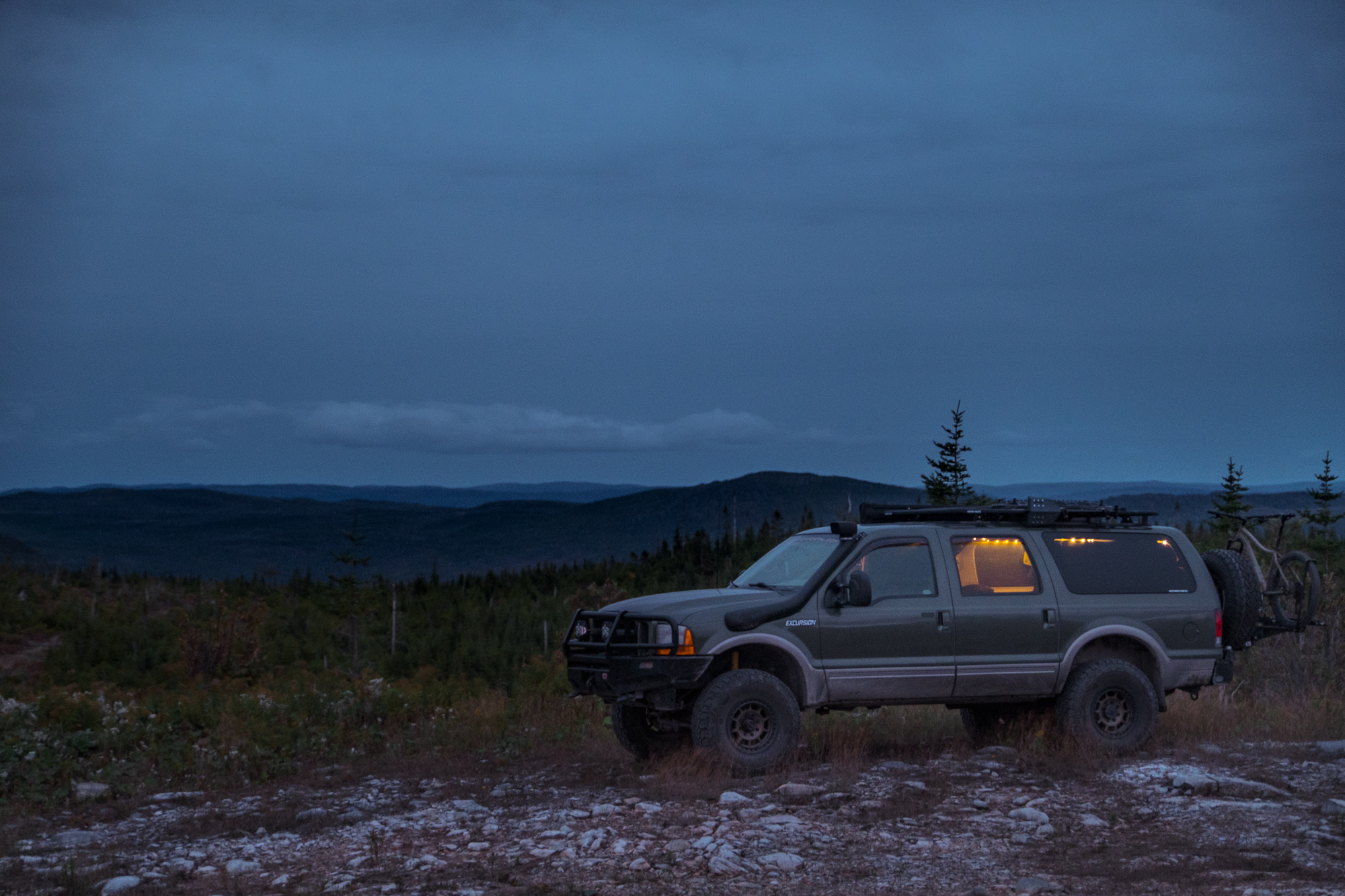
The open-cell foam also has the secondary benefit of reducing the feedback from movement on the mat. While you will still feel your partner tossing and turning, it’s not nearly as bad as on a traditional air mattress, and that leads to a better night’s sleep.
The Megamat’s laminated polyester fabric is as durable and non-slip as their site describes, and the tricot top was also quite comfortable. While it wasn’t as soft as the fabric covers on the Sea to Summit or Nemo pad we tested, I felt like it would be less prone to wearing or discoloration over time—definitely a benefit. More importantly, it had very little of the annoying crackling sound common in most sleeping pads, so you won’t have to worry about sounding like a bag of chips each time you roll over.
As you’d expect, the setup is a cinch thanks to a self-inflating design, but I really liked the inclusion of a small air pump as well since it meant there was never a need to get out of the sleeping bag to top off air pressure. You can just reach out of your bag, squeeze the pump a few times, and you’re done.
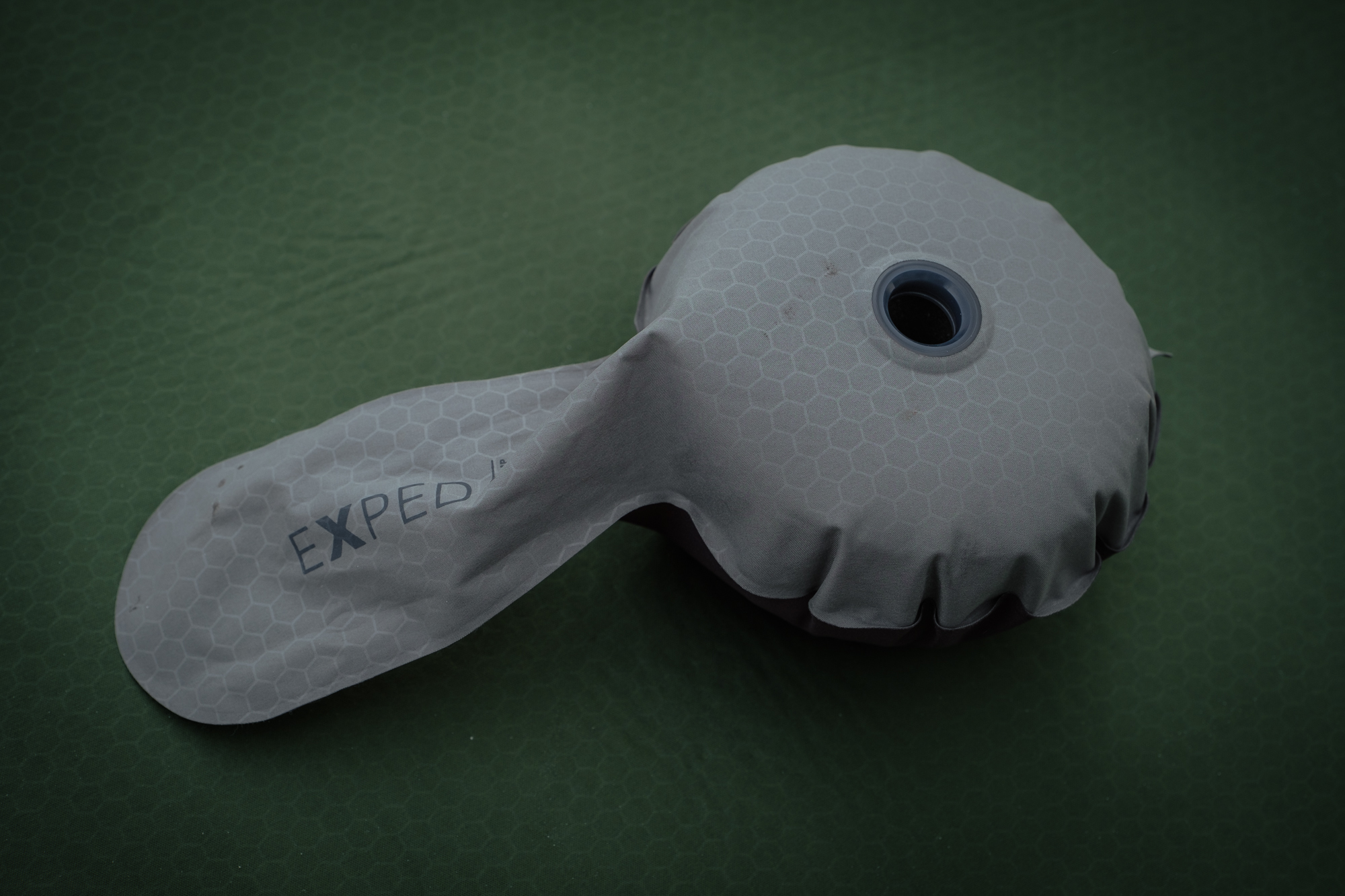
The deflation and breakdown process is equally well thought out. Like most pads, it features a large dump valve that allows the air to escape quickly, but what sets the Megamat apart is that it doesn’t need to be squeezed into a tiny sack for storage. Instead, Exped provides a roll-top bag so you can quickly toss the pad in without fully deflating it on trips. No more wrestling with a bag that never seems to fit, no matter how many times you roll the pad.
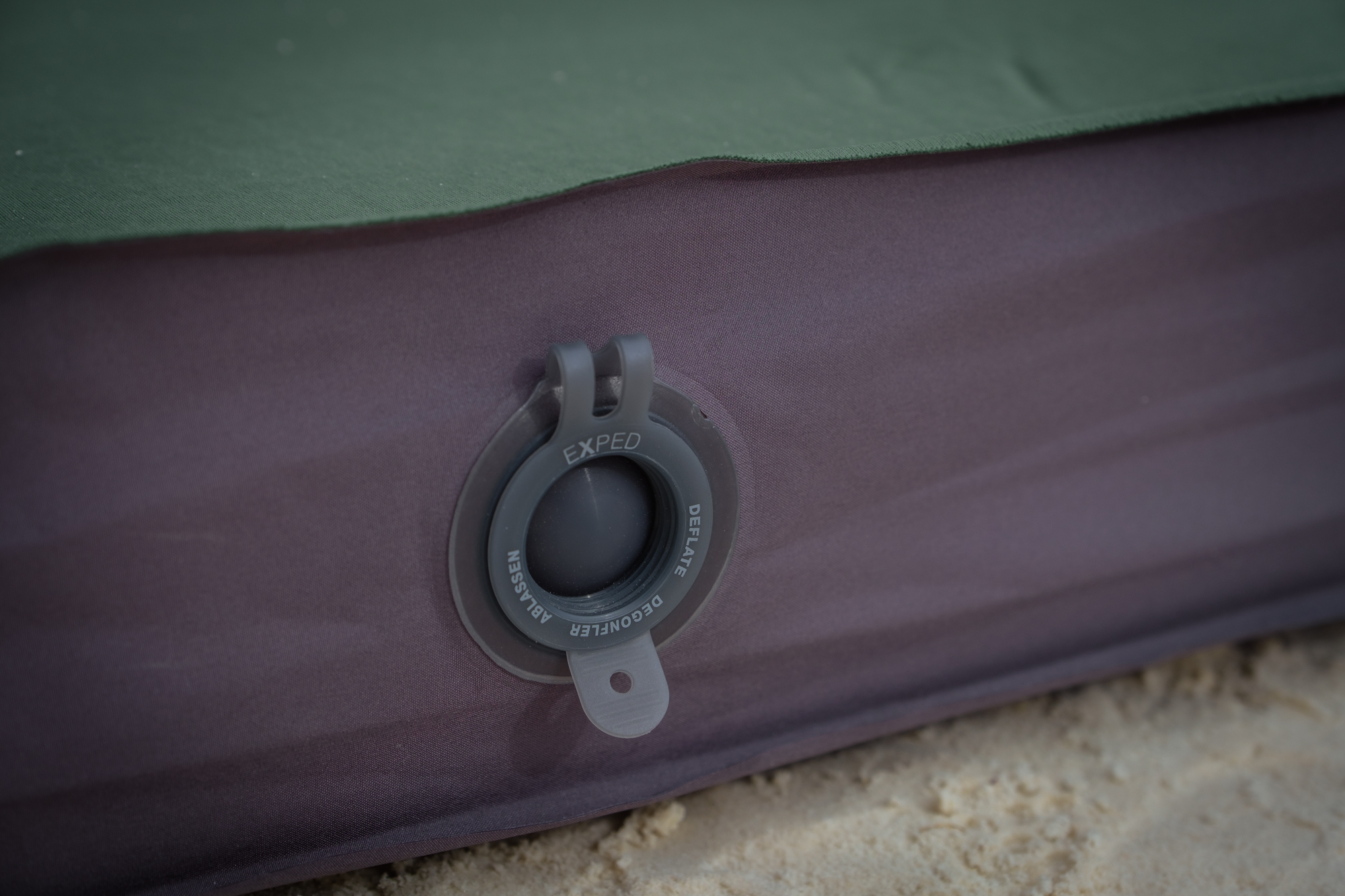
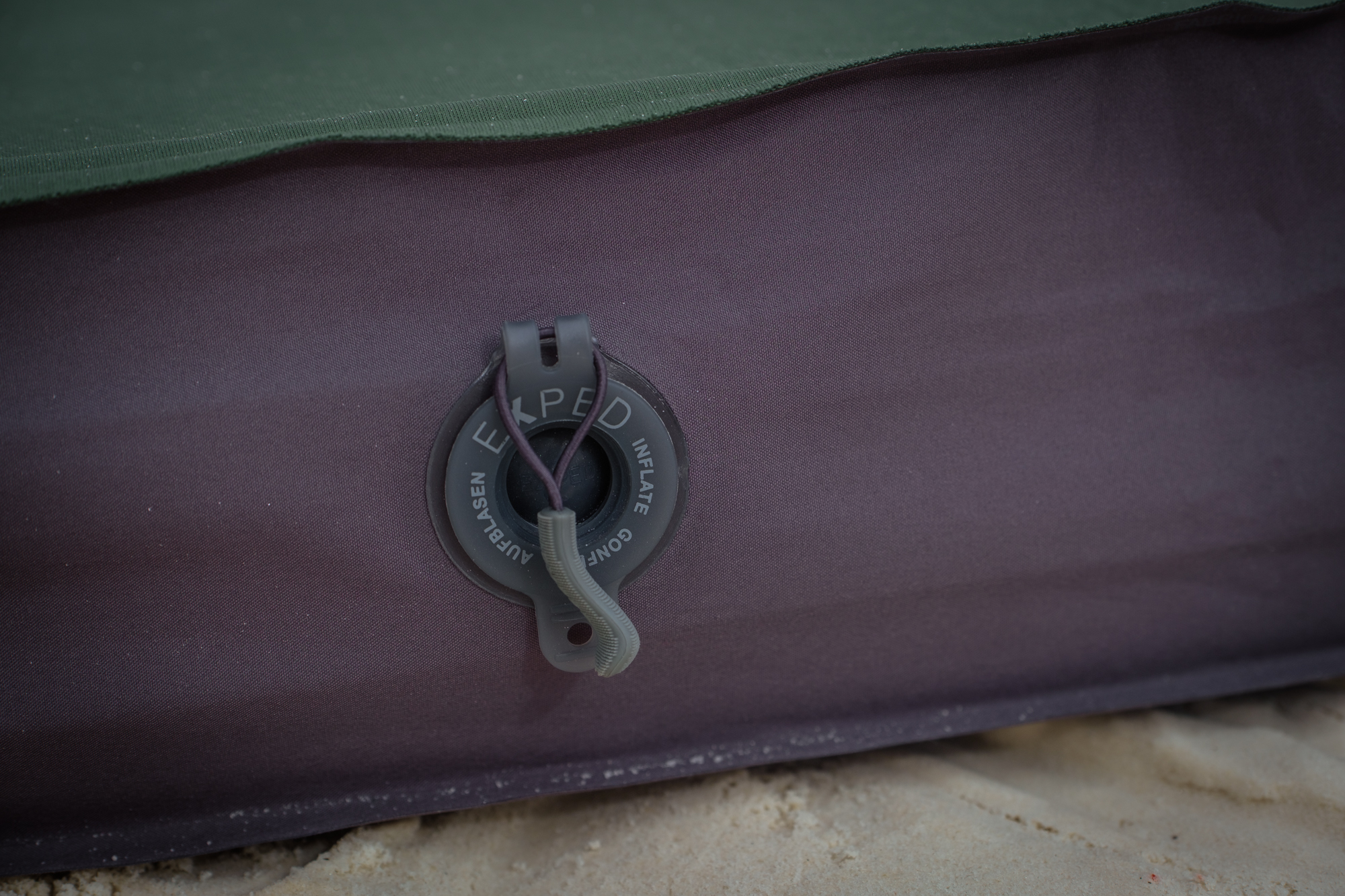
Another big selling point for the Exped is the variety of sizing. All told, there are five unique layouts for these pads in various lengths and widths. Single pads can be purchased in regular, long, or long wide, while the Duo pad comes in regular or long wide plus. This makes it easy to match your vehicle or personal size with dimensions ranging from 25.6 x 72 inches up to 52 x 77.6 inches, ensuring an ideal fit for just about any need.
Summary
Overall, the Exped Megamat is exceptionally comfortable, and still a great option in today’s market despite increased competition. I look forward to sinking into it every night I’m on the road. But the truth is that I would probably be just as comfortable on a Roamer or Comfort Deluxe because even the most discerning sleeper would be hard-pressed to tell one 4-inch-thick pad from another these days. The real differences are in features, pricing, and sizing, and the Megamat offers value with all three.
The insulation is phenomenal, which makes it perfect for sleeping in cars, and the easy deflation and pack-up won’t drive you crazy if you have to collapse the pad to drive your vehicle each day. The wide variety of sizes ensures you’ll find something that fits your needs. While I didn’t find there to be any earth-shattering advantages when compared to other pads, I also couldn’t find a single thing to complain about. So if you’re looking for a plush camping pad that you’re sure to love, the Megamat is certainly worth a look.
